Mikhail Mansion is an accomplished media artist, design engineer and co-founder of Floridarama (formerly Fairgrounds St. Pete), an incredible museum of immersive art & technology in St. Petersburg, Florida.
We spoke with Mikhail recently about his 2024 exhibition “Nature Pix” (February 22 – April 21) in which he used ENTTEC LED lighting fixtures and controls to craft an installation of interactive experiences that illuminated the nuances of nature, human perception, and technology.
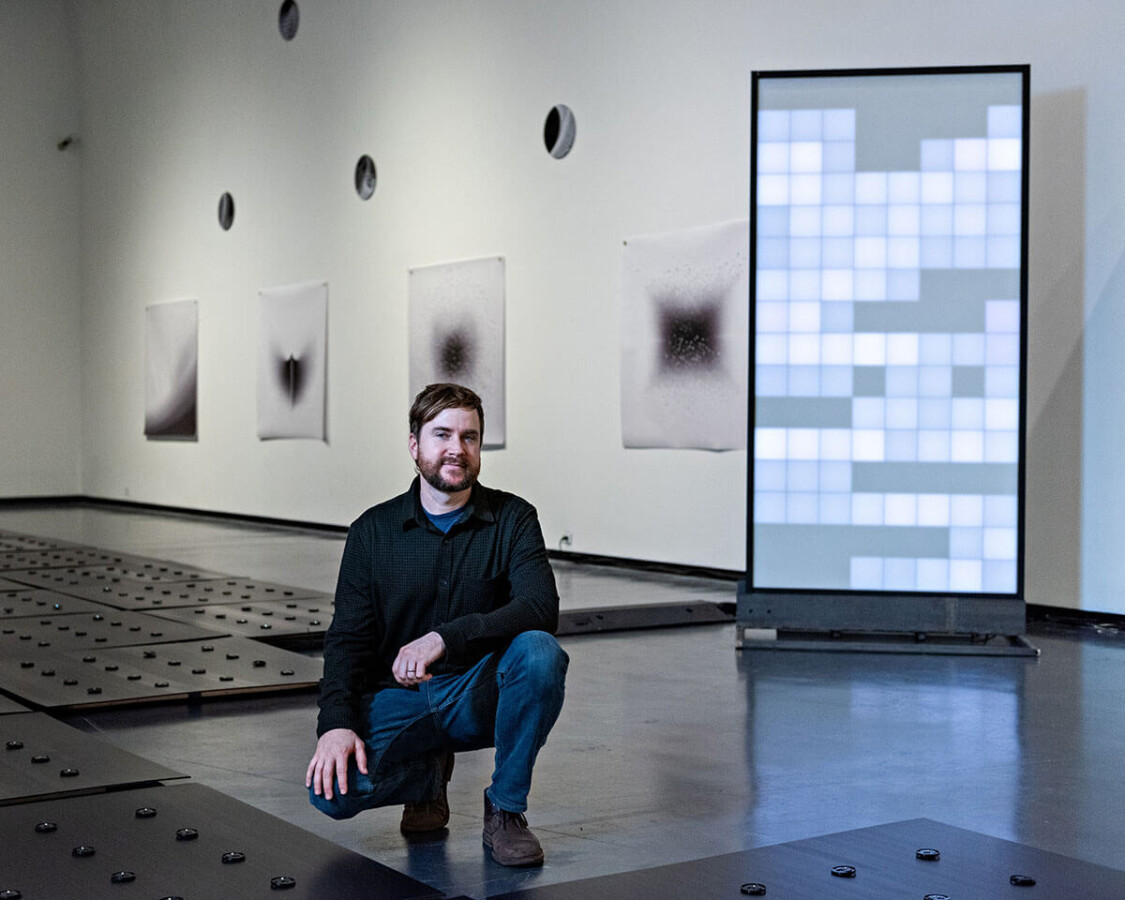
Artistry meets technology
ENTTEC: Mikhail, “Nature Pix” was a stunning exhibition populated by thought-provoking artwork and installations. What was it all about?
Mikhail: The aim of “Nature Pix” was to capture the essence of the natural world through minimalist pieces such as algorithmic drawings and digital sculptures. By incorporating real-time sensor data from nature, viewers were immersed in a unique sensory experience, where each sculpture served as a bespoke platform of expression.
The exhibition utilized a grid-like design to contrast the organic world while also drawing parallels to the realms of coding and computation. Through a series of artistic interpretations, the digital content transcended into a realm of emergent phenomena, creating a transformative visual narrative.
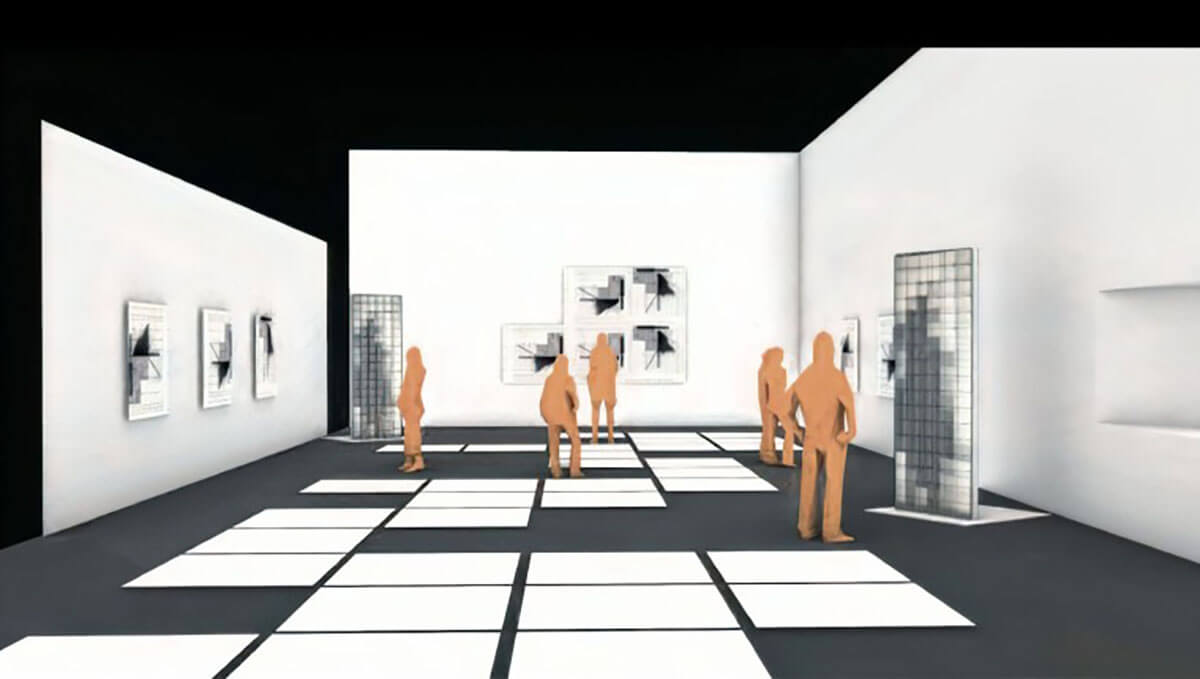
“Nature Pix” exhibition concept
ENTTEC: Rather than simply depicting this relationship between organic and man-made, your work is immersive and interactive – very experiential. How do you utilize light to enhance the emotional depth and narrative complexity of your installations, encouraging a deeper audience engagement with the themes you explore?
Mikhail: Light is a captivating artistic medium that I deeply explore and integrate into my work. It stands as a fundamental element in my artistic expression. Utilizing computer-driven, integrated lighting, I convey nuances of nature. In this scenario, a sensor-guided nature-centric framework is employed. It’s akin to data visualization but with a touch of poetry. Rather than data being starkly presented on a digital interface, it is elevated through the exploration of the sculptural interplay between light and form, enriching the visual experience.
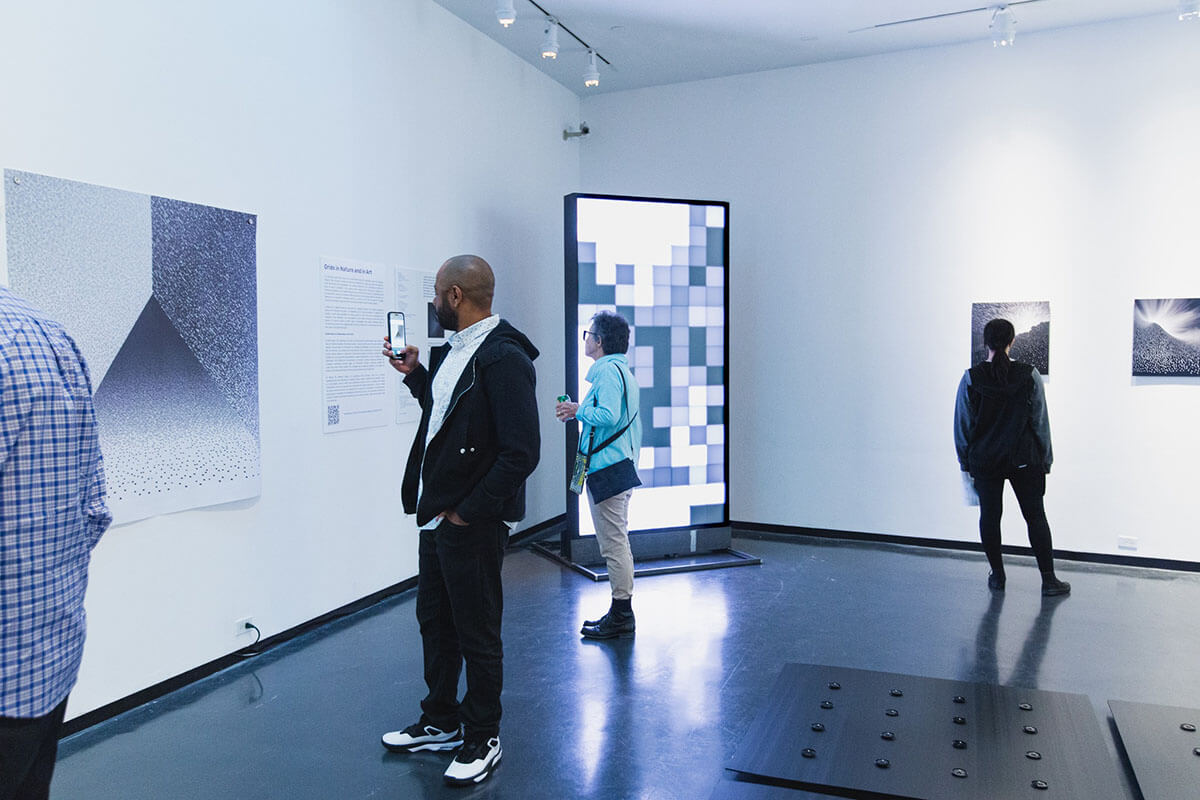
Technical integration
ENTTEC: What made ENTTEC lighting products stand out as the right choice for your artwork? In what ways have they enabled or enhanced your creative process?
Mikhail: I’ve used ENTTEC gear on a range of creative technology projects. I’ve always had a good experience and think the quality and reliability is worth the investment. It’s amazing how many lighting products are on the market, but I’ve found from experience that I get what I pay for. I’d always rather have my artwork presented in the best light.
For this project, I crafted three low-resolution, monolithic light sculptures resembling pixelated screens. Opting for the Smart PXL 60 LED pixel dots proved wise, given their excellent output and simplified setup that reduced the need for custom soldering.
Spread across a vast indoor and outdoor museum-space, each sculpture was self-contained, with all components integrated to manage the lights and power conversion. Just a simple ethernet cable connection, and voilà! Data could be sent from a central LAN computer via CAT6 cables over long distances. The pairing of ENTTEC OCTO drivers and Smart PXL dots performed flawlessly, delivering the desired results effortlessly.
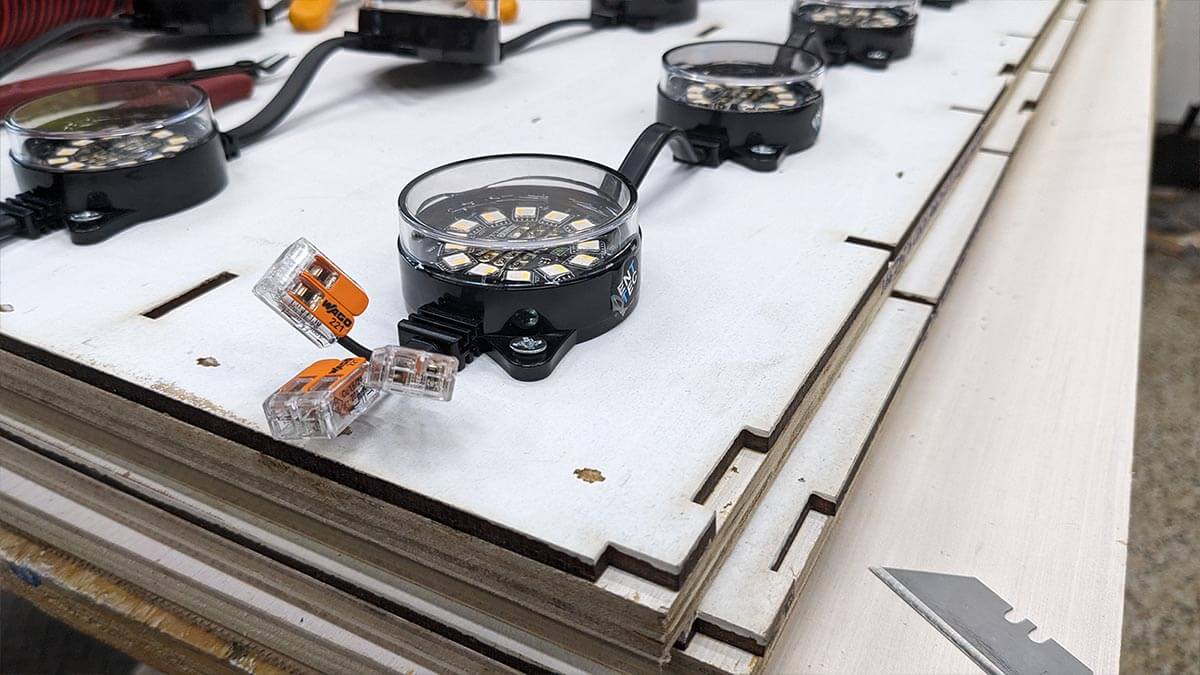 |
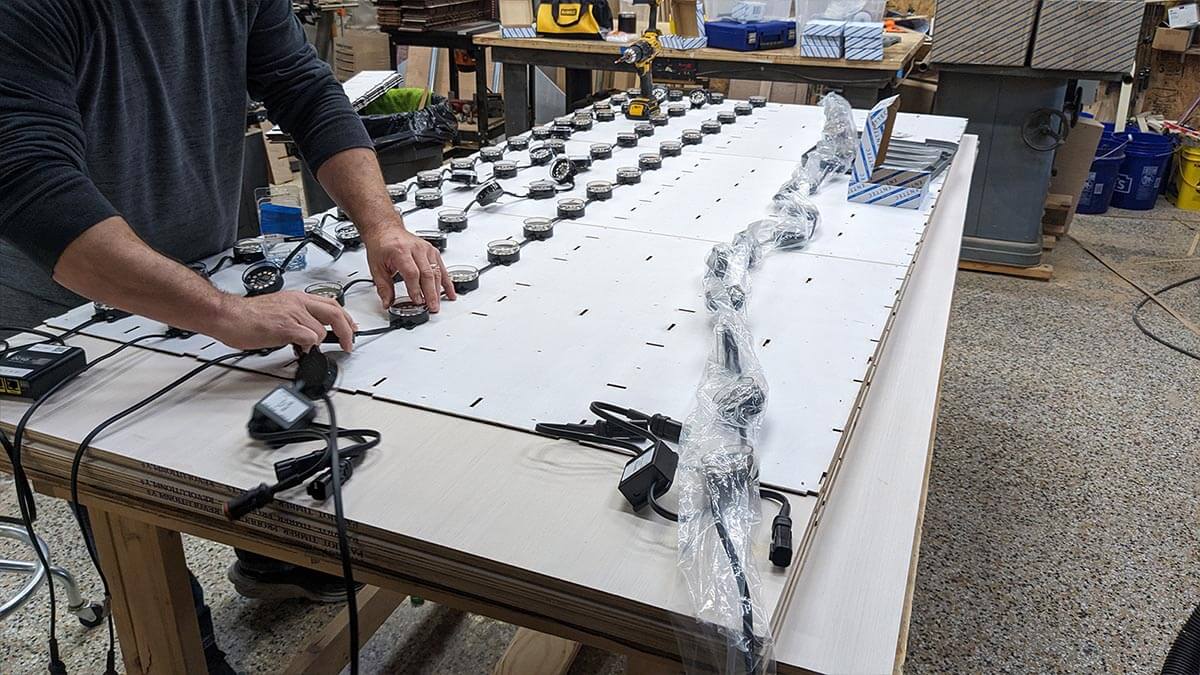 |
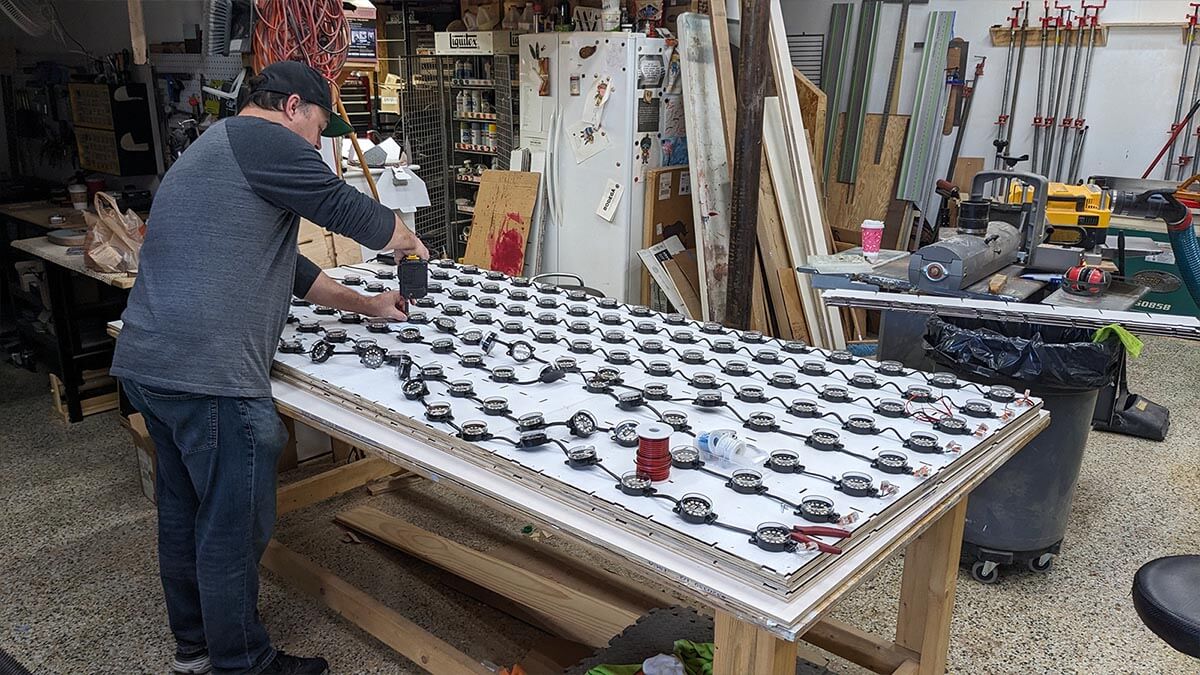 |
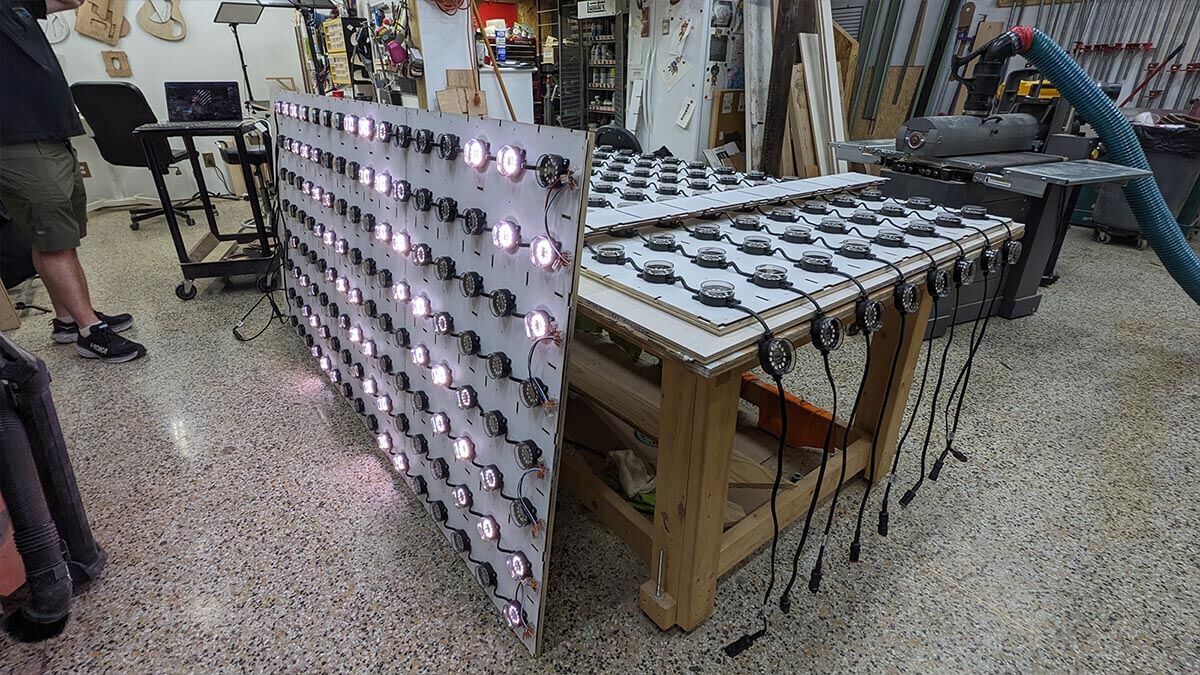 |
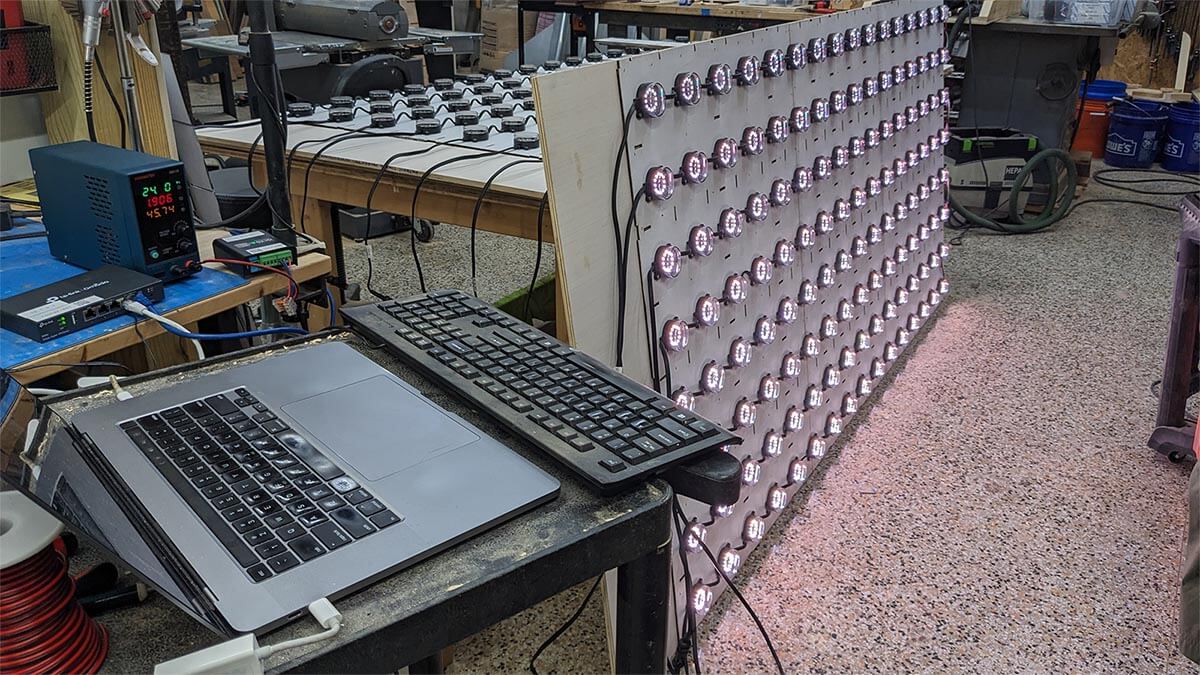 |
The installation being fabricated using ENTTEC SMART PXL dots
ENTTEC: In terms of the technical process of integrating the PXL60s and OCTOs into your artwork, how did you address challenges related to programming, synchronization, and installation?
Mikhail: The setup process was relatively simple. The sculpture featured a laser-cut backboard with pre-cut holes aligning with the lighting puck flanges. The lights were arranged vertically in a 16×8 grid, interconnected in a daisy chain. Power injection was applied only at the beginning and end of the 128-light series.
Each lighting strand included 17 lights, which seemed unconventional. I had to trim one light from each strand, expose the wires, and connect them to the adjacent column while following the data flow direction. This task was challenging as cutting the cable jackets of these lights required precision to avoid damaging the leads. At the sculpture’s base, there was a designated space for a DIN rail, where I securely mounted the OCTO and a 24V DC power supply.

Programming required a couple of steps. First, I had to access the web UI of the OCTO and configure the colorspace, protocol, and IP settings. Then I had to configure my driver application to define fixtures, set data flow directions, adjust pixel types, and configure the network protocol (sACN in my case). My input source was coming from outdoor IP cameras via NDI stream. Once everything was configured properly it worked beautifully!
ENTTEC: Looking back following the completion the “Nature Pix” project, how do you see your art evolving with current and future advancements in lighting and digital technologies?
Mikhail: The potential for creative lighting applications seems boundless. Sculptural, kinetic, and interactive possibilities abound. Delving into the psychographics of lighting, which taps into the perceptual realm of experiences encompassing emotional and cultural responses, adds an intriguing layer. I am keen on delving deeper into how lighting can enrich our interactions with nature and materials, presented artistically. I look forward to integrating these pieces into fresh and captivating contexts in upcoming projects.
ENTTEC: And we thoroughly look forward to seeing them! Thank you, Mikhail.
Visit Floridarama at 2606 Fairfield Ave. South, Saint Petersburg, Florida 33712, USA
Visit Mikhail Mansion online at mikhailmansion.art
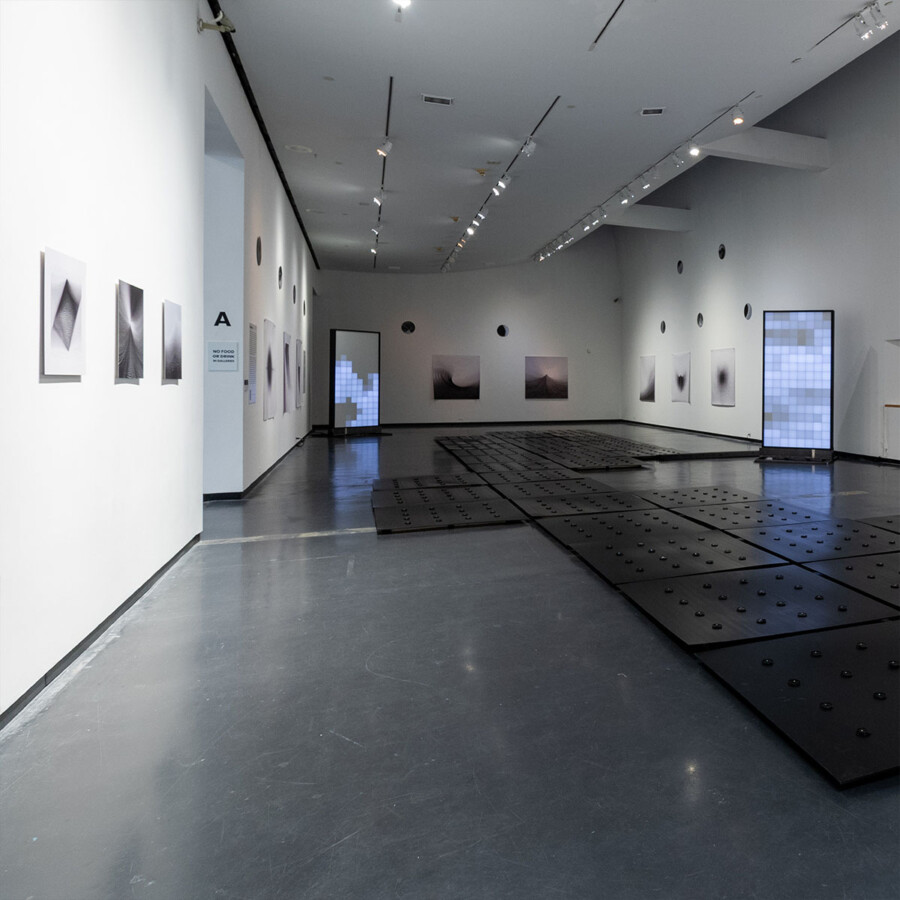 |
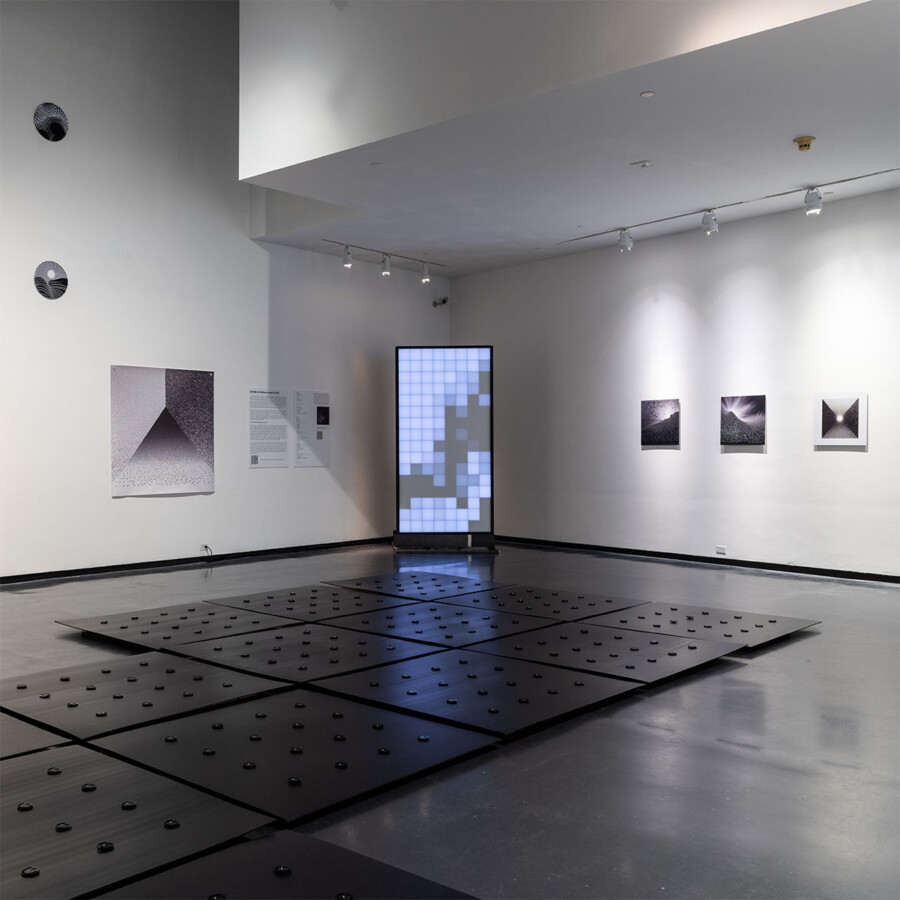 |
